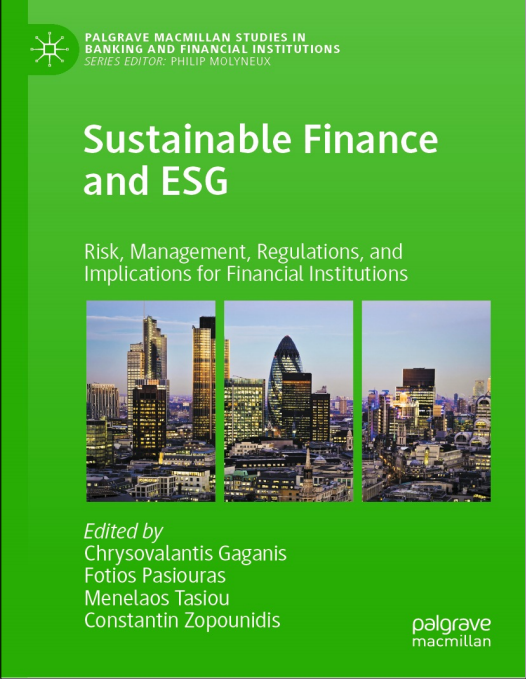Sustainable Finance and ESG: Risk, Management, Regulations, and Implications for Financial Institutions by Chrysovalantis Gaganis

1 Introduction
The financial sector landscape has seen the development of a new mindset
on banking in line with social, environmental, and ethical values. This
chapter puts together the diverse financial institutions created along these
views. For simplicity, we group them under the label of “social banks
(SBs)”, while acknowledging the significant heterogeneity of social
missions that can be pursued by these institutions. SBs are at the
intersection of two sets: the large set of banking institutions on the one
hand, and the value-based grassroots initiatives aimed at addressing
financial operations by prioritizing non-financial outcomes on the other
hand (Mersland et al., 2019). The latter category includes various entities,
such as crowdfunding platforms, microfinance institutions, financial
cooperatives, community development banks, and charitable foundations
(Cornée et al., 2022), which are concerned with providing funding
opportunities and “put the person at the center of the intervention” (Milano,
2011). In short, SBs are financial intermediaries paying attention to the
consequences of their financial operations on society and nature
(Benedikter, 2011; Cornée & Szafarz, 2014; Paulet et al., 2015; Weber &
Remer, 2011). SBs are therefore hybrid organizations (Billis, 2010) in the
sense of contributing to the common good while seeking to be financially
sustainable.
This chapter focuses on SBs as financial institutions. SBs differ from
social impact investing, which is, according to Rizzi et al. (2018), another
“dominant” form of social finance. While both social banking and social
impact investing pursue social goals, impact investing has specific
strategies about fund allocation and client services, seeking to combine
social outcomes and financial returns, whereas SBs introduce social values
into their business activities; their ethical principles lead to financing social
initiatives and generate fair financial returns (Rizzi et al., 2018). Only a few
socially responsible investment funds meet the holistic ethical needs of SBs
(Krause & Battenfeld, 2019). Impact investing is considered in another
chapter of this book.
2 Social Banks in the Field
The roots of social banking can be traced back to the late middle age.
According to Milano (2011), the Monti di Pietà,
started in the fifteenth
century in Italy and spread later to the rest of Europe, can be considered as




